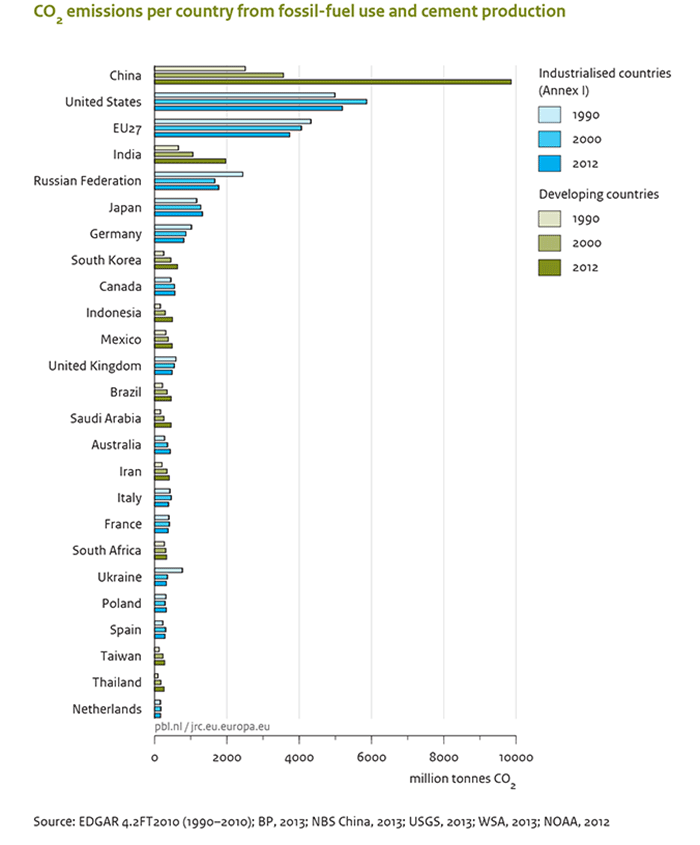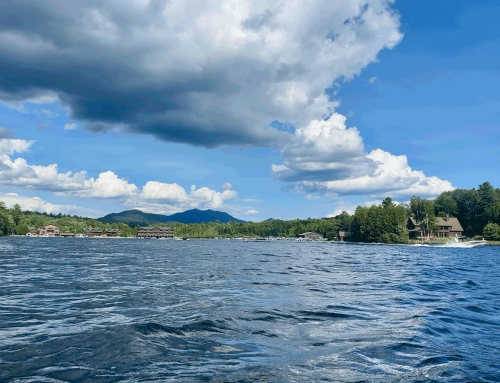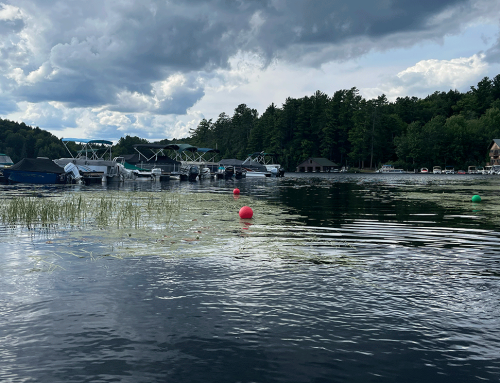Today’s announcement that the U.S. Environmental Protection Agency (EPA) has released draft greenhouse gas emission reduction regulations for over 1,000 existing power plants is a major landmark in environmental history. EPA estimates that 83% of greenhouse gas emissions are from carbon dioxide (C02) released into the atmosphere. As a group these coal-fired power plants are the single largest sources of C02 pollution in the U.S., producing nearly 25%. These new rules expect to produce a 20% reduction in C02 emissions by 2020 and 30% by 2030 (based on 2005 levels).
For President Obama this marks the realization of a reelection campaign pledge to confront climate change and start the transition from a fossil fuel driven economy and American lifestyle. He talked about C02 reduction in his radio address last weekend. Here’s video of EPA Administrator Gena McCarthy’s address made this morning.
Read a PROTECT press release that cheers this announcement by the EPA.
There hasn’t been much good news on the climate change front. The new EPA C02 rules mark the biggest climate change effort ever advanced by a U.S. President. Congress had refused to work on any climate change legislation, leaving President Obama with little choice other than administrative rule making. The C02 rules announced today will be finalized and fully implemented before Obama leaves office in January 2017.
Today’s launch of a national C02 reduction program is a historic landmark. Today marks the beginning of U.S. action on climate change. This action is similar to the creation of the national Clean Water Act, Clean Air Act, Wilderness Act and Endangered Species Act. This is a major moment in U.S. environmental history.
According to the EPA these are the basic facts. The making of electricity produces 32% of C02 emissions in the U.S. followed by the transportation sector at 28%, industry at 20%, commercial/residential at 10% and agriculture at 10%. The biggest fuel source used for the production of electricity is coal, which while it supplies 39% of electricity made, it produces 75% of CO2 emissions from the electricity sector. About 29% of electricity in 2012 was generated using natural gas, which has grown by the hydro-fracking boom, followed by 20% from nuclear and 12% from renewables. Coal-fired power plants are the single biggest “stationary source” of C02 pollution emissions as they produce fully 25% of U.S. C02 pollution.
How will this program work? (Here’s a good Q&A on the history of C02 pollution controls and how the new EPA program is likely to work.) The new program is partly modeled after the success of the 1990 Clean Air Act (CAA) amendments, which inaugurated the cap-and-trade program. This is a system whereby a “cap” is set for the maximum allowable amount of pollution in tons for a polluter, based on science, and which can be modified over time if the environment is not adequately protected. The “trade” creates a framework whereby individual companies choose to either reduce emissions by making investments in pollution controls (or switching fuel sources) or to purchase “pollution credits” on the open market that allows them to pollute above their cap level. Companies that invest if deeper emissions controls can recoup their investments by selling credits each year for the amount they yield under their cap. This system was pioneered by the Environmental Defense Fund (EDF).
Cap-and-trade has resulted in significant reductions in acid rain, lowering pollution levels to a point where once fishless lakes and ponds in the western Adirondacks can now support fish again. Cap-and-trade programs are currently in effect for sulfur dioxide or nitrogen oxide (the key pollutants in acid rain). Under the C02 regulations, the EPA will set the caps for each facility.
The rules also require significant action by the states. Each state will be required to develop a state plan for the facilities within their borders. These plans are similar to other CAA plans that states have developed over the years. In one big difference with the recent Medicaid expansion under the federal Affordable Care Act (Obamacare), where some states have opted out of offering this program to state residents, the C02 regulations have no opt-out provision. If a state chooses not to develop a plan that meets EPA approval, then the EPA will develop and implement a plan for that state. An important factor in this program is that no state can opt out.
Another aspect of the state plans is that it brings the climate change issue to every governor and every state environmental agency. They will be involved one way or the other and industry and advocates will work at the state level to implement a variety of loopholes and programs for steeper reductions. While this will certainly allow for more conservative states to slow-walk implementation, this new program will bring climate change discussion, advocacy and action to every state.
What is the timeframe for implementation? EPA will start taking public comments on the draft C02 regulations right away. This will follow all public process rules for public review and comment. These draft rules may go down in history as the most commented upon ever with total comments in the tens of millions. The EPA C02 regulations will be finalized in June 2015. State plans will need to be finalized by June 30, 2016.
Three things stand out in these new C02 regulations.
First, the EPA’s authority to enact these regulations is settled law. The George W. Bush era EPA attempted to eliminate C02 as a pollutant to be regulated under the Clean Air Act (CAA). The CAA has always included C02 as a pollutant to be regulated, but never promulgated regulations. In Massachusetts v. EPA the Supreme Court ruled in a 5-4 decision that C02 could be regulated by the EPA. While there will certainly be legal challenges to the EPA’s regulations once finalized, implementation cannot be blocked.
Second, this affirms cap-and-trade as the environmental regulatory law of the land. Expect to see a new batch of similar control efforts for other pollutants.
Third, while the new EPA C02 regulations start with the biggest single source of C02 pollution – coal fired power plants – this is only the beginning of widespread C02 emission controls. Hopefully, other sectors will be phased in over time to tackle emissions in the transportation sector and also for building construction and operation.
The transportation sector produces the second most C02 pollution after electricity production. The White House and EPA have pointed out that today’s emission controls for utilities accompany Obama’s actions in 2011-2012 on automobile mileage standards, which seeks to make 50 miles per gallon the U.S. standard by 2025. The EPA projects massive C02 reductions from these enhanced mileage standards.
350.org, which many see as at the vanguard of the climate change advocacy movement, is dedicated to bringing carbon levels down to a level of 350 parts per billion in the atmosphere and maintaining that level. In 2013, the planet’s carbon levels exceeded 400 ppb for the first time. Today, carbon levels have steadily moved above 400 ppb. Bill Mckibben says that the increase from 350-400 ppb melted the Arctic. Recent reports showed that the Antarctic is melting at unprecedented rates. Clearly, bold action is needed.
International trends show only three countries have reduced C02 emissions from 1990 levels – Germany, Great Britain, and the Netherlands. U.S. emissions have come down since 2000, but are up significantly from 1990 levels. China’s C02 emissions have increased 5-fold. U.S. per capita emissions stood at 17 tons of C02 per American in 2012, second only to Australia. British per capita emissions were half the U.S. rates.
The most fascinating aspect of this is the mandate for the state plans. This means that states need to develop their own programs for reductions or form regional partnerships. New York is part of the Regional Greenhouse Gas Initiative (RGGI), started in the Pataki era. It has been successful for a decade, though New Jersey Governor Chris Christie pulled New Jersey from the program. Clearly, RGGI provides a framework for regional action to meet the EPA’s new requirements. Hopefully, these new regulations catalyze New York to bolder action on the C02 reduction front.
Many have gone to pains to state that these new EPA C02 reduction regulations are in no way, shape or form a national energy plan. So far, national leaders have been unable to bridge the enormous divides that prevent action. Hence, U.S. energy policy is now ad hoc, state and industry driven, which will undermine long-term expansion of renewables.
Compare U.S. actions here with that of Germany. As mentioned above the U.S. gets 12% of its energy from renewables. In the first quarter of 2014, Germany got 27%. They have accomplished this through a national program that is based on making solar power production affordable for homeowners, farmers and small businesses. By stimulating a massive household solar production system, the Germans have become the world’s largest producer of solar panels.
The new EPA C02 reduction rules for power plants will be challenged in court relentlessly by industry and red state leaders. This may slow the implementation, but EPA leaders are confident that the new rules cannot the blocked.
We must make sure that these actions mark the beginning on broad based, sustained action that will enable the U.S. to meet the immense challenges caused by climate change.
This morning Gena McCarthy said that the risks of climate change were clear, the science is clear, and the costs of inaction are clear.
PROTECT also published this piece in the Adirondack Almanack.






